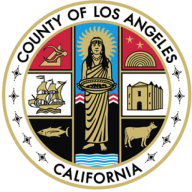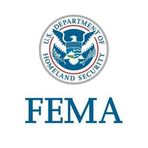Southern California's Firestorm: A Battle Against Nature and Communication Failures
January 30, 2025, 11:09 pm

Location: United States, California, Los Angeles
Employees: 10001+
Founded date: 1850
Southern California is a land of contrasts. Sun-soaked beaches and sprawling cities meet rugged mountains and dry canyons. But when fire meets drought, the landscape transforms into a battleground. Recent wildfires have exposed not just the fury of nature but also the fragility of our emergency response systems.
In January 2025, Southern California faced a fierce test. The Eaton Fire erupted, fueled by relentless winds and parched conditions. Homes turned to ash, and lives were shattered. Amidst the chaos, the rain finally arrived, a double-edged sword. It quenched the flames but raised fears of mudslides in the burn areas.
The rain came after months of dry weather, a drought that had gripped the region. Firefighters welcomed the downpour, but the aftermath was a mixed blessing. Rain can wash away the remnants of fire, but it can also unleash torrents of mud and debris. The scars of the Palisades and Eaton fires were still fresh, and the landscape was vulnerable.
As the storm rolled in, the mountains of San Bernardino and Riverside counties braced for snow. Chains were required for vehicles heading to ski resorts, a stark reminder of winter's grip. Yet, for many, the snow was a distant concern. The fires had left a wake of destruction. Thousands of homes were lost, and the death toll climbed.
The Palisades Fire, the larger of the two, was nearing full containment. But the damage was done. Entire neighborhoods were reduced to rubble. The Eaton Fire, which claimed even more lives, was also inching toward containment. The devastation was staggering.
In the midst of this disaster, the emergency alert systems faltered. Residents were left in the dark, literally and figuratively. Many received no notifications about the fires. Others got alerts too late, after they had already fled. The system, designed to protect, became a source of confusion.
One family, caught in the chaos, learned of the fire through a neighborhood app. They received their first official warning only after they had evacuated. This was not an isolated incident. Reports flooded in of families scrambling for information, navigating the flames without guidance.
The hours between midnight and dawn were particularly chaotic. Fire crews were overwhelmed, resources stretched thin. As embers rained down, calls for help surged. Yet, many neighborhoods remained unaware of the danger creeping closer.
Communication is key in emergencies. Yet, the overlapping alert systems in Los Angeles County created a web of confusion. Residents were directed to multiple links for notifications, each with its own software. The lack of coordination hampered effective communication.
Experts emphasize the need for clear, timely alerts. Research shows that effective warnings must be specific and believable. People need to understand the threat before they react. But in this case, many were left guessing.
The aftermath of the fires revealed another layer of complexity. The ash left behind was toxic, a cocktail of burned materials. Residents were urged to wear protective gear while cleaning up. The environmental impact of the fires would linger long after the flames were extinguished.
As the rain fell, officials worked to mitigate the damage. Cleanup efforts were expedited, but the challenges were immense. The debris flows that followed the rain were a stark reminder of the risks. The memory of the Montecito mudslides in 2018 loomed large.
In the wake of the fires, the federal government stepped in. A statement from the White House promised assistance to local authorities. The Federal Emergency Management Agency was tasked with expediting debris removal. But the scars of the fires would take much longer to heal.
Southern California's struggle with wildfires is not new. Each year, the region faces the threat of flames. But the recent events have highlighted the need for better communication and preparedness. The systems in place must evolve to meet the challenges of a changing climate.
As the smoke clears and the rain falls, the lessons learned must not be forgotten. The fires have exposed vulnerabilities in our emergency response. It is a call to action. Communities must come together to demand better systems, clearer communication, and a commitment to safety.
In the end, Southern California is a land of resilience. The spirit of its people shines through even the darkest times. But resilience must be paired with preparation. The next fire season is just around the corner. The time to act is now.
The rain may have doused the flames, but the fight for safety and clarity continues. The scars of the past must guide the future. Southern California deserves a system that protects its residents, not one that leaves them in the dark.
In January 2025, Southern California faced a fierce test. The Eaton Fire erupted, fueled by relentless winds and parched conditions. Homes turned to ash, and lives were shattered. Amidst the chaos, the rain finally arrived, a double-edged sword. It quenched the flames but raised fears of mudslides in the burn areas.
The rain came after months of dry weather, a drought that had gripped the region. Firefighters welcomed the downpour, but the aftermath was a mixed blessing. Rain can wash away the remnants of fire, but it can also unleash torrents of mud and debris. The scars of the Palisades and Eaton fires were still fresh, and the landscape was vulnerable.
As the storm rolled in, the mountains of San Bernardino and Riverside counties braced for snow. Chains were required for vehicles heading to ski resorts, a stark reminder of winter's grip. Yet, for many, the snow was a distant concern. The fires had left a wake of destruction. Thousands of homes were lost, and the death toll climbed.
The Palisades Fire, the larger of the two, was nearing full containment. But the damage was done. Entire neighborhoods were reduced to rubble. The Eaton Fire, which claimed even more lives, was also inching toward containment. The devastation was staggering.
In the midst of this disaster, the emergency alert systems faltered. Residents were left in the dark, literally and figuratively. Many received no notifications about the fires. Others got alerts too late, after they had already fled. The system, designed to protect, became a source of confusion.
One family, caught in the chaos, learned of the fire through a neighborhood app. They received their first official warning only after they had evacuated. This was not an isolated incident. Reports flooded in of families scrambling for information, navigating the flames without guidance.
The hours between midnight and dawn were particularly chaotic. Fire crews were overwhelmed, resources stretched thin. As embers rained down, calls for help surged. Yet, many neighborhoods remained unaware of the danger creeping closer.
Communication is key in emergencies. Yet, the overlapping alert systems in Los Angeles County created a web of confusion. Residents were directed to multiple links for notifications, each with its own software. The lack of coordination hampered effective communication.
Experts emphasize the need for clear, timely alerts. Research shows that effective warnings must be specific and believable. People need to understand the threat before they react. But in this case, many were left guessing.
The aftermath of the fires revealed another layer of complexity. The ash left behind was toxic, a cocktail of burned materials. Residents were urged to wear protective gear while cleaning up. The environmental impact of the fires would linger long after the flames were extinguished.
As the rain fell, officials worked to mitigate the damage. Cleanup efforts were expedited, but the challenges were immense. The debris flows that followed the rain were a stark reminder of the risks. The memory of the Montecito mudslides in 2018 loomed large.
In the wake of the fires, the federal government stepped in. A statement from the White House promised assistance to local authorities. The Federal Emergency Management Agency was tasked with expediting debris removal. But the scars of the fires would take much longer to heal.
Southern California's struggle with wildfires is not new. Each year, the region faces the threat of flames. But the recent events have highlighted the need for better communication and preparedness. The systems in place must evolve to meet the challenges of a changing climate.
As the smoke clears and the rain falls, the lessons learned must not be forgotten. The fires have exposed vulnerabilities in our emergency response. It is a call to action. Communities must come together to demand better systems, clearer communication, and a commitment to safety.
In the end, Southern California is a land of resilience. The spirit of its people shines through even the darkest times. But resilience must be paired with preparation. The next fire season is just around the corner. The time to act is now.
The rain may have doused the flames, but the fight for safety and clarity continues. The scars of the past must guide the future. Southern California deserves a system that protects its residents, not one that leaves them in the dark.

